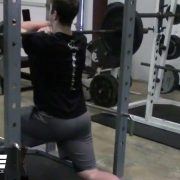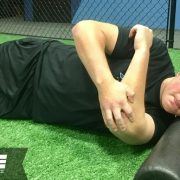Resting Heart Rate Variability Among Professional Baseball Starting Pitchers
Heart rate variability (HRV) can be an important metric for athletes to measure recovery and response to stress. A recent research report was published looked at HRV between starts in professional baseball pitchers.
The results indicate that changes to the autonomic nervous system were present on the day after a start, but returned to baseline the next day. This indicates a certain level of stress the day after a start, which would help justify a lighter day of training and recovery-based activities.
We all know that pitching performance decreases with fatigue. The authors recommend each pitcher measure their HRV daily over the course of a season to best monitor overtraining. Certainly interesting and something to keep an eye on in an attempt to develop a system of customizing pitchers’ training and workloads between starts.
I also wonder the implications of monitoring relievers to assess potential overtraining over the season. Hope someone measures this in the future as well.
Abstract: Cornell, DJ, Paxson, JL, Caplinger, RA, Seligman, JR, Davis, NA, and Ebersole, KT. Resting heart rate variability among professional baseball starting pitchers. J Strength Cond Res 31(3): 575–581, 2017—The purpose of this study was to examine the changes in resting heart rate variability (HRV) across a 5-day pitching rotation schedule among professional baseball starting pitchers. The HRV data were collected daily among 8 Single-A level professional baseball starting pitchers (mean ± SD, age = 21.9 ± 1.3 years; height = 185.4 ± 3.6 cm; weight = 85.2 ± 7.5 kg) throughout the entire baseball season with the participant quietly lying supine for 10 minutes. The HRV was quantified by calculating the natural log of the square root of the mean sum of the squared differences (lnRMSSD) during the middle 5 minutes of each R-R series data file. A split-plot repeated-measures analysis of variance was used to examine the influence of pitching rotation day on resting lnRMSSD. A statistically significant main effect of rotation day was identified (F4,706 = 3.139, p = 0.029). Follow-up pairwise analyses indicated that resting lnRMSSD on day 2 was significantly (p ≤ 0.05) lower than all other rotation days. In addition, a statistically significant main effect of pitcher was also identified (F7,706 = 83.388, p < 0.001). These results suggest that professional baseball starting pitchers display altered autonomic nervous system function 1 day after completing a normally scheduled start, as day 2 resting HRV was significantly lower than all other rotation days. In addition, the season average resting lnRMSSD varied among participants, implying that single-subject analysis of resting measures of HRV may be more appropriate when monitoring cumulative workload among this cohort population of athletes.
Source: Resting Heart Rate Variability Among Professional Baseball Starting Pitchers
Mike Reinold
Latest posts by Mike Reinold (see all)
- 3 Ways Baseball Pitchers Can Use a Radar Gun to Enhance Performance - April 16, 2019
- 3 Things Baseball Players Need to Develop Elite Pitching Performance - January 15, 2018
- How to Get Your Arm Loose When Throwing Indoors - November 14, 2017










Leave a Reply
Want to join the discussion?Feel free to contribute!